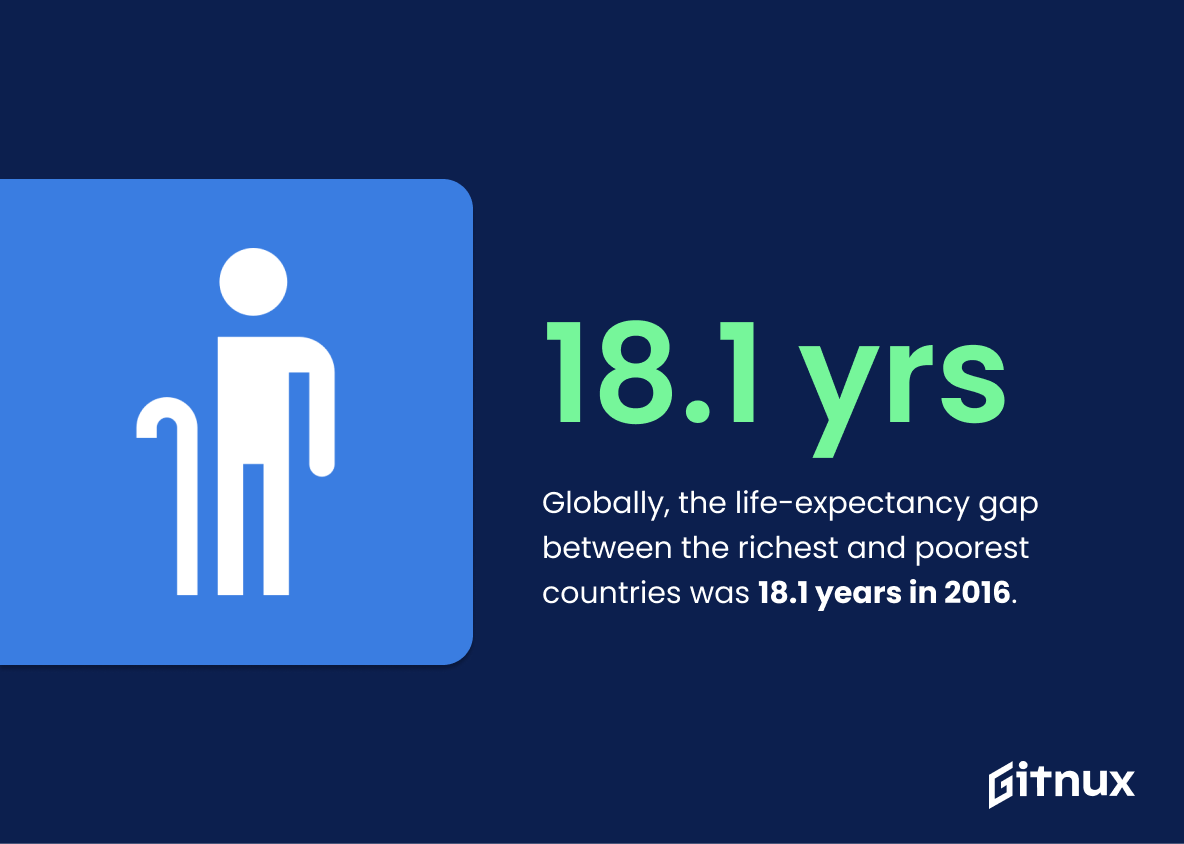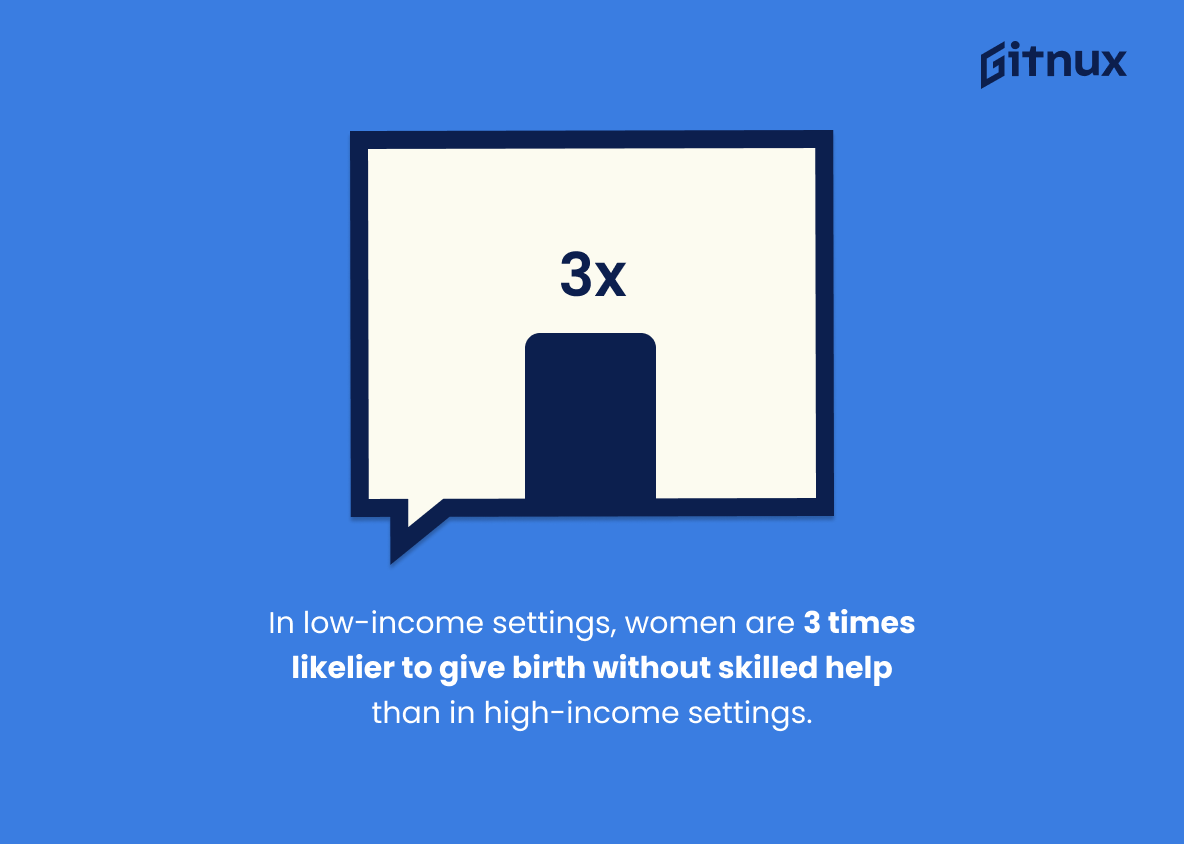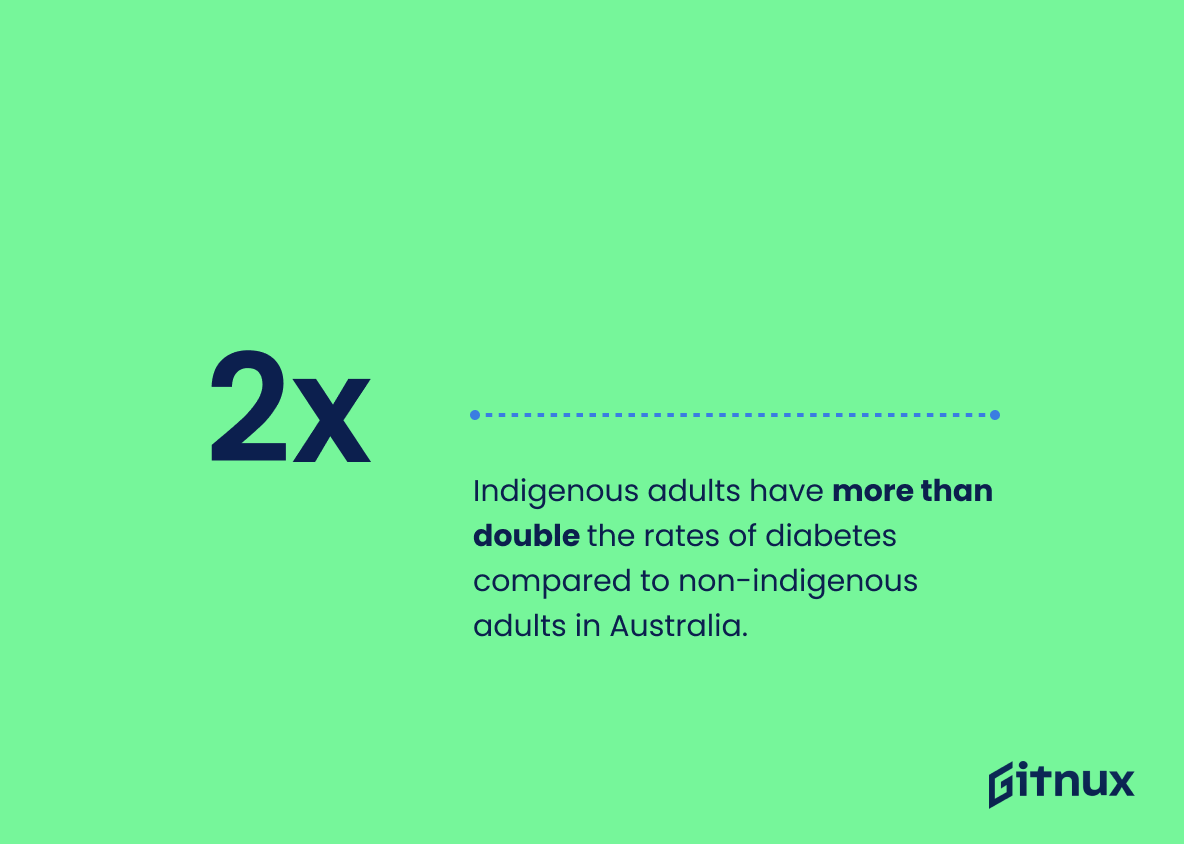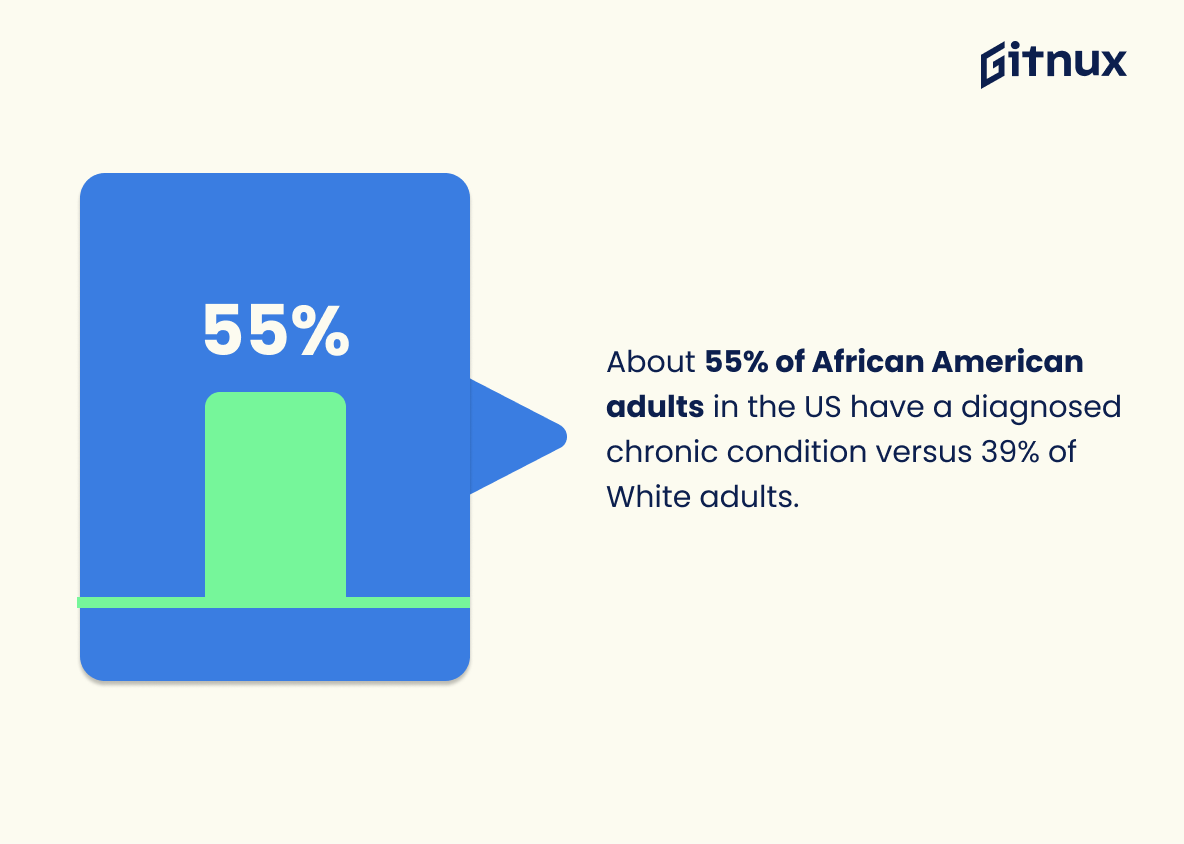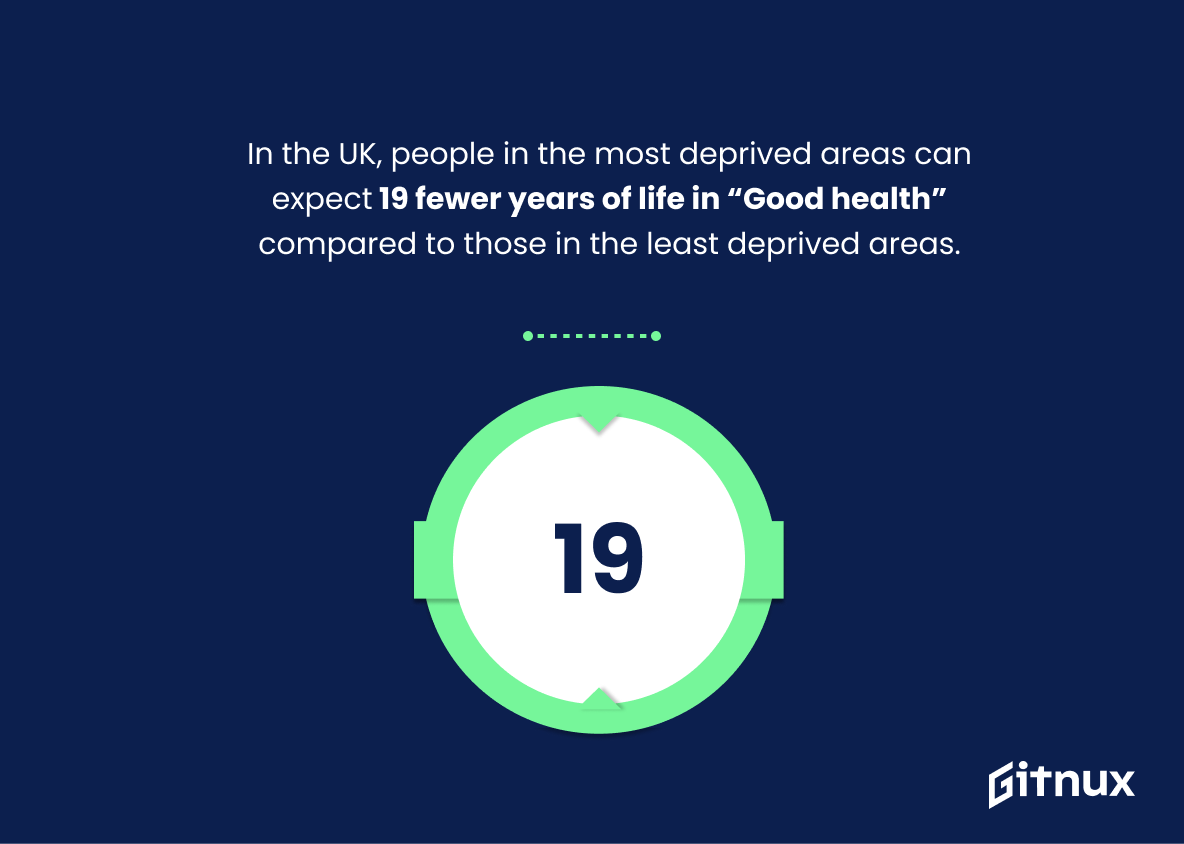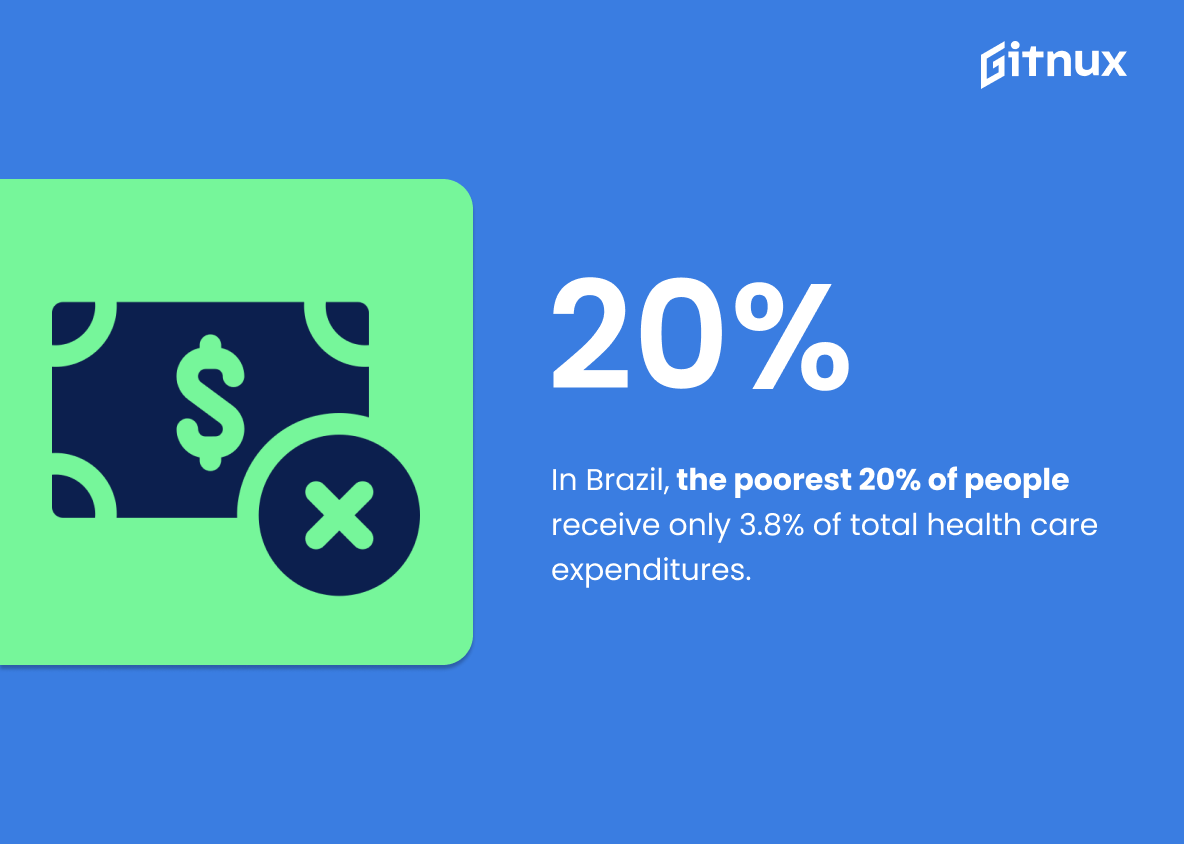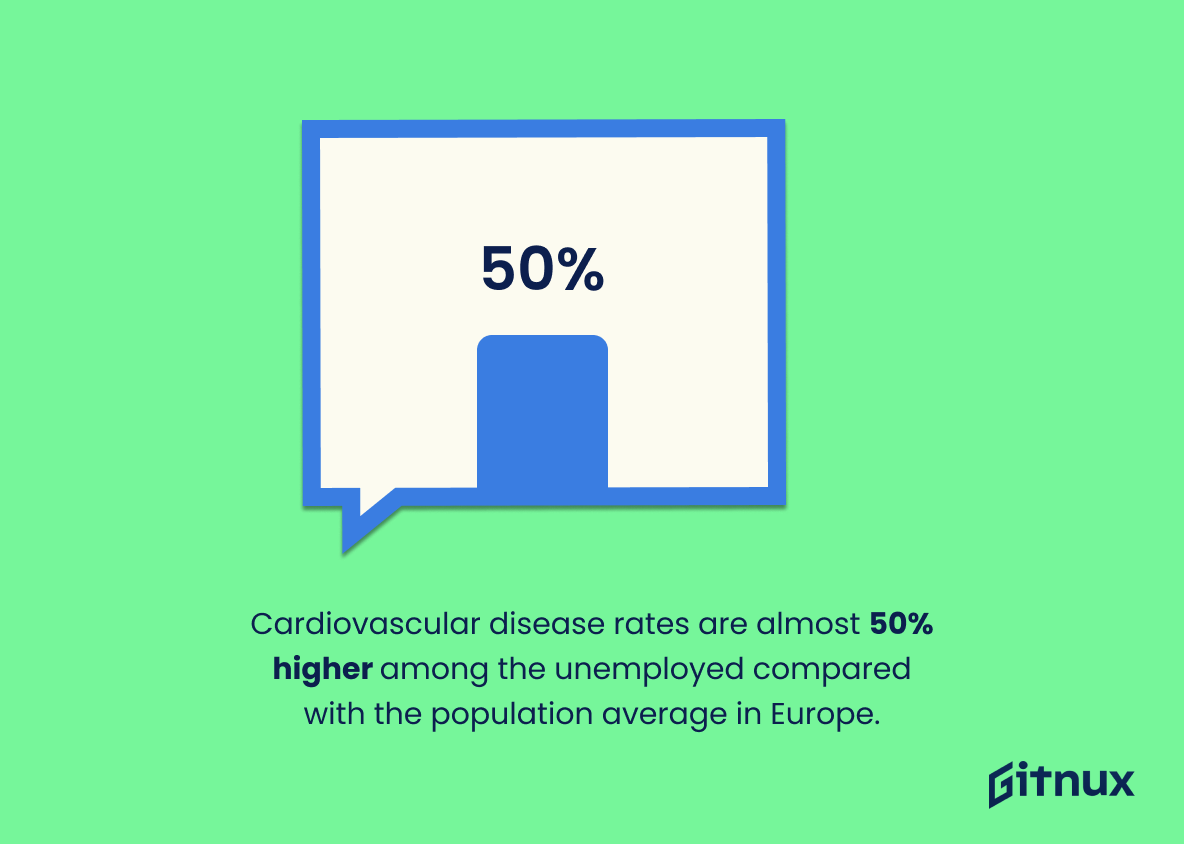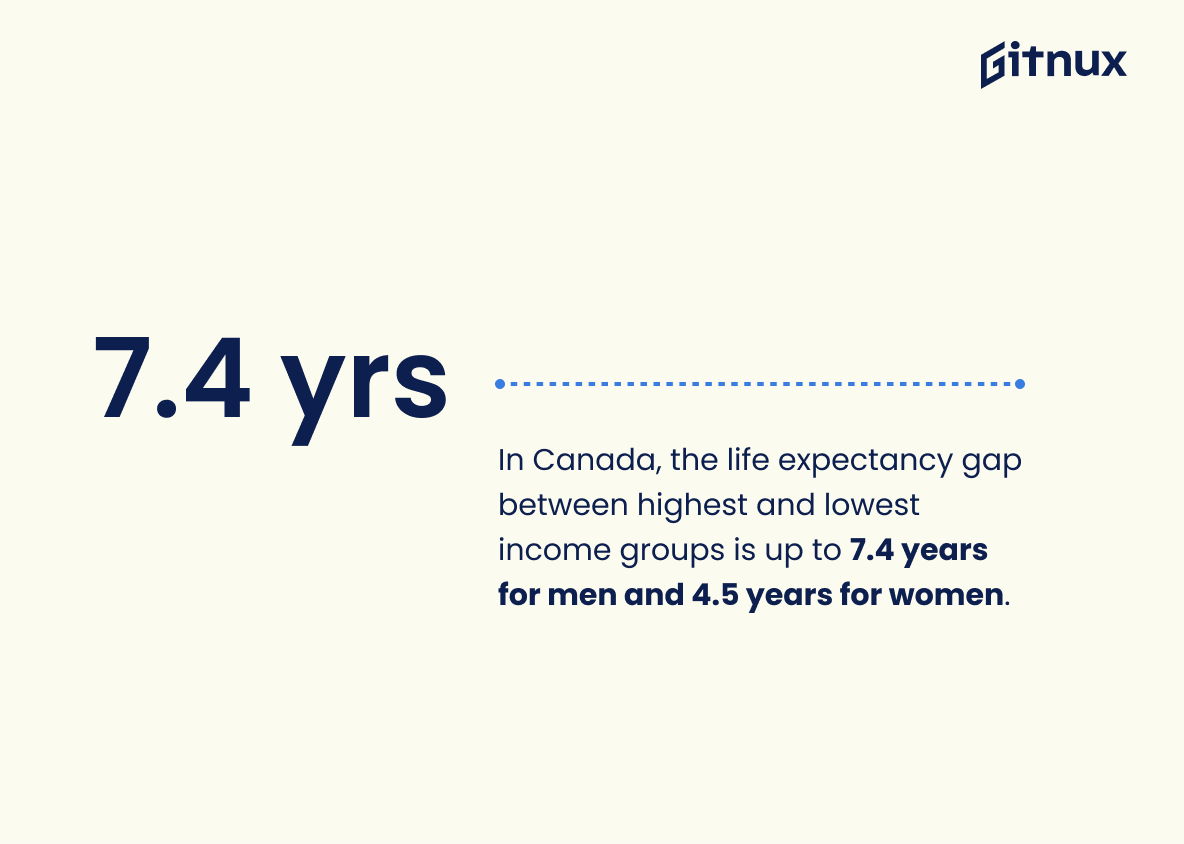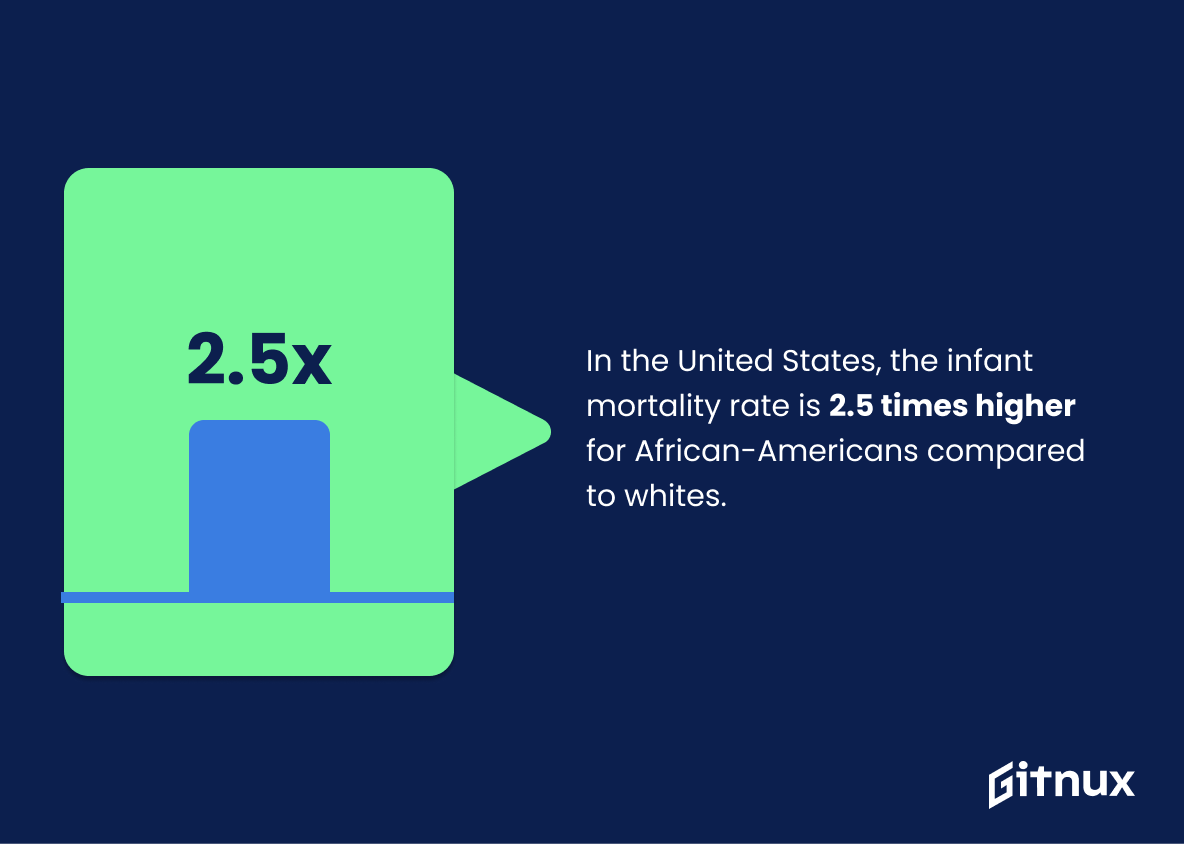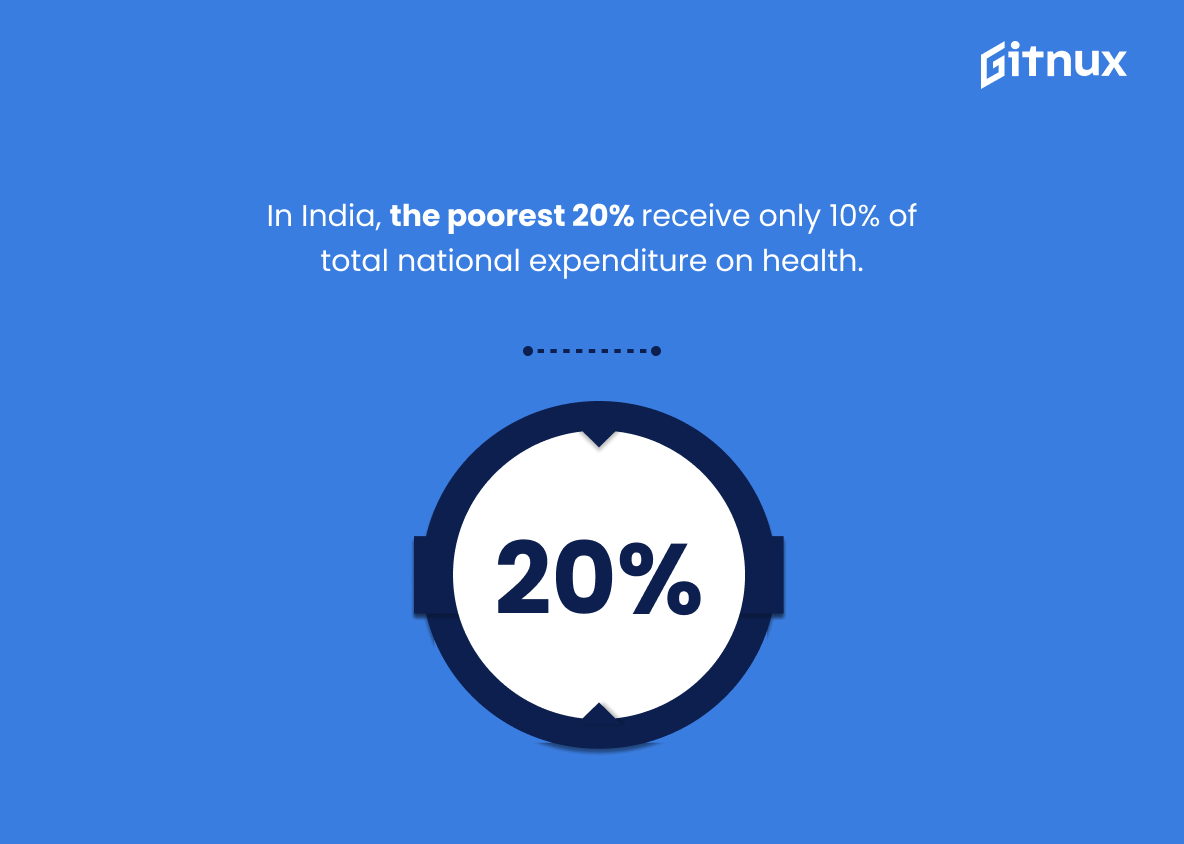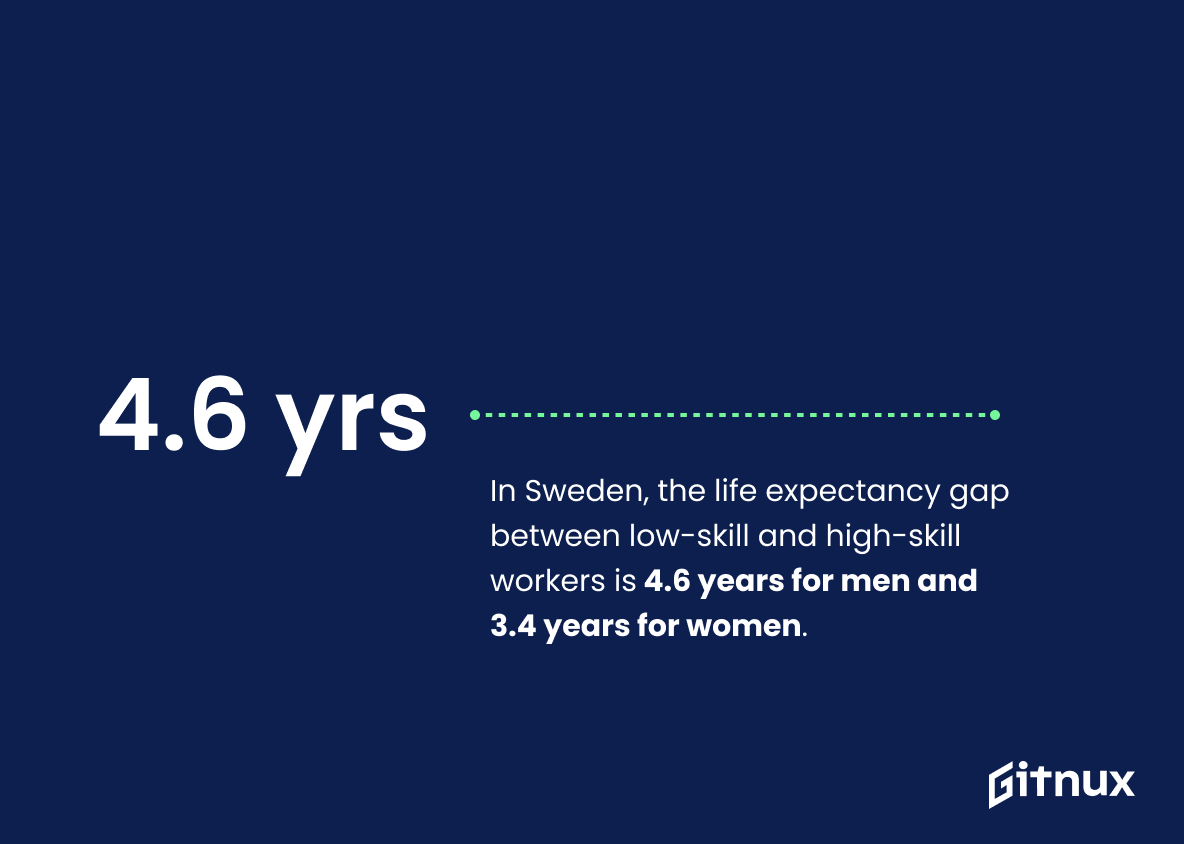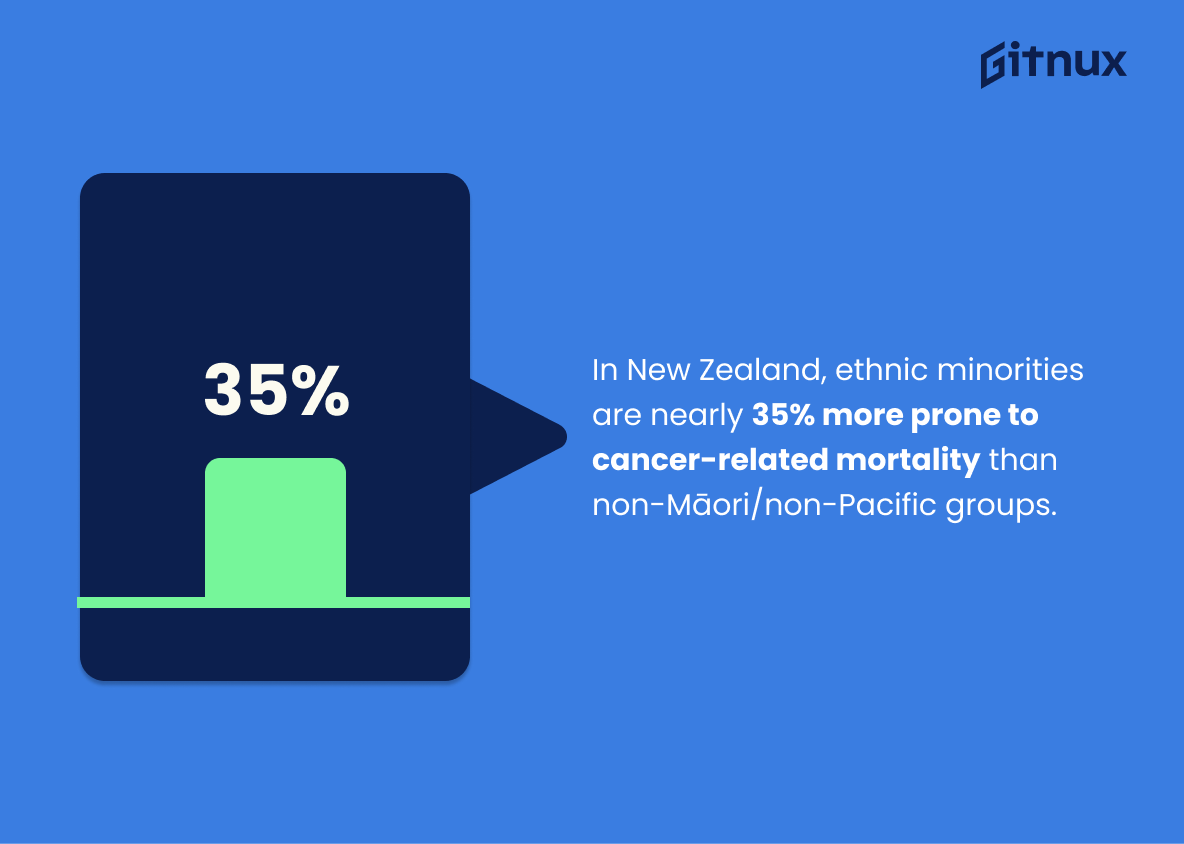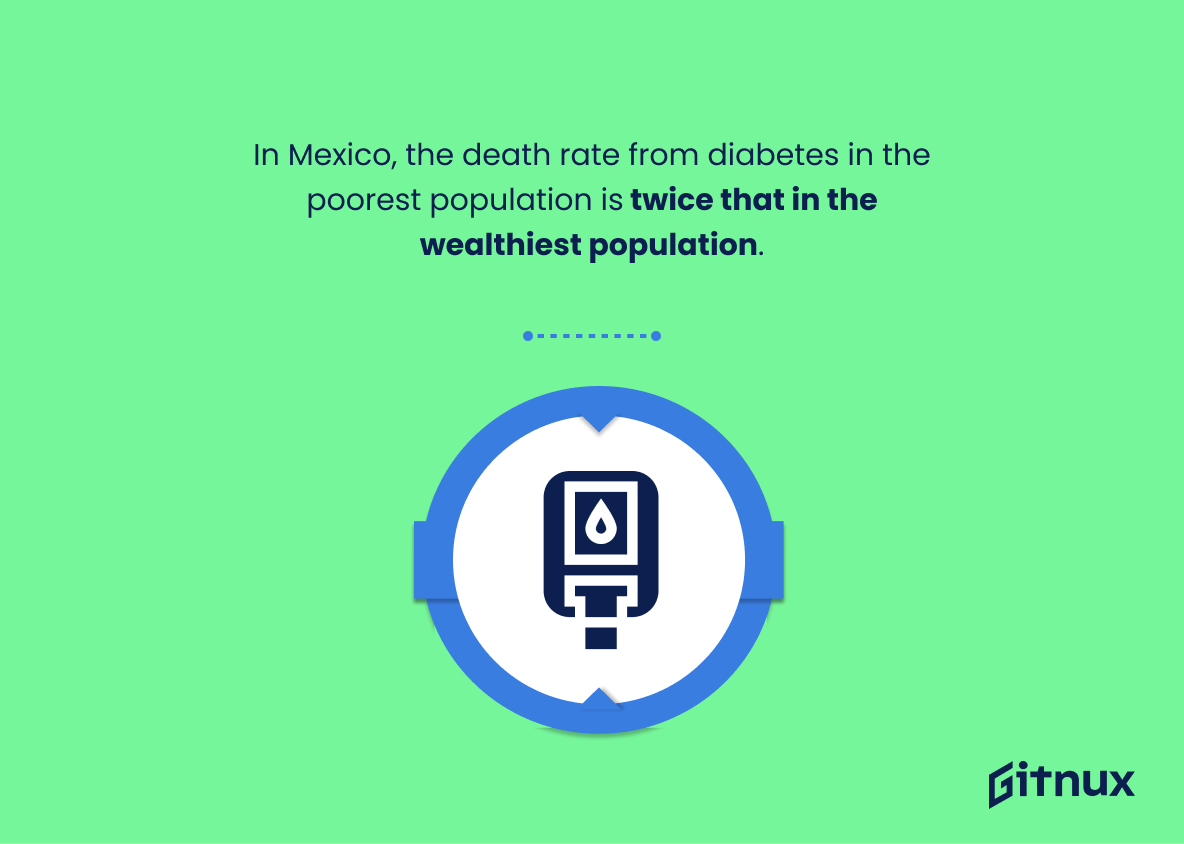In a world that has achieved remarkable scientific advancements and introduced revolutionary healthcare interventions, the disparity in health statistics across different socioeconomic, racial, and geographical lines presents a sobering reality. This blog post aims to shed light on the multifaceted issue of health inequalities, drawing from compelling data and real-world examples to illustrate how such disparities persist in our global healthcare ecosystem. We will delve into the factors contributing to these inconsistencies, the implications for individuals and communities, and potential strategies to bridge the worrying health gaps. Join us as we unpack the complex matrix of inequalities that mark health statistics, and discuss the call to action that this issue fundamentally embodies.
The Latest Inequalities In Health Statistics Unveiled
Globally, the life-expectancy gap between the richest and poorest countries was 18.1 years in 2016.
In the vibrant tableau of global health disparities, this compelling statistic—the 18.1 years life-expectancy gap that existed between the wealthiest and most impoverished nations in 2016—paints a poignant visual. This insight sharpens our focus on the stark contrasts in the global healthcare landscape, magnifying the repercussions of economic inequality.
This figure is a glaring indictment of regional inequities in healthcare access, quality and delivery, a red underline emphasizing the world’s unfulfilled promise of universal health coverage. The voices of this 18.1 year gap resonate in a profound narrative of global healthcare disparity, a sobering reminder that our journey towards healthcare equity is far from over.
In a blog post scrutinizing inequalities in health statistics, this data plays a pivotal role. It operates as a lens, bringing into sharp focus the correlation between wealth, access to quality health care and longevity. This statistic, like a silent protagonist, spearheads the discourse on global health inequality, igniting dialogue, stoking debates, and prompting actions towards a more equitable health future.
Women in low-income settings are three times more likely to give birth without the help of a skilled birth attendant than women in high-income settings.
Drawing attention to this profound disparity underscores the gravity of healthcare inequalities that persistently plague our global community. In the realm of maternal health, income level alarmingly seems to be a determinant of the accessibility and quality of care a woman receives during childbirth. Emphasizing the fact that women in impoverished settings have thrice the likelihood of unattended births compared to their affluent counterparts, unearths a pressing health crisis. This stark contrast actively fuels the dialogue around health inequity, advocacy for universal healthcare access, and allocation of resources for maternal care, particularly in underprivileged areas. The urgent call, thus, is to bridge this gap and strive for a world where the birth process is as safe for every woman, irrespective of her financial capability.
Indigenous adults have more than double the rates of diabetes compared to non-indigenous adults in Australia.
Highlighting the statistic of heightened diabetes rates amongst Indigenous adults as compared to non-Indigenous counterparts in Australia brings to the forefront the glaring health inequalities in the country. It’s a stark reminder how health disparity does not merely exist across different age or income groups but runs far deeper, intersecting the very roots of ethnicity and cultural identity. When discussing health inequalities, it’s paramount to consider these hidden facets of the issue and bring them into the open. Not simply numbers, this statistic serves as a call to action, inspiring us to address these inequalities head-on.
About 55% of African American adults in the US have a diagnosed chronic condition versus 39% of White adults.
Delving into the heart of health disparities, this striking statistic illustrates a clear and vivid image of imbalance. A stark contrast lies between the 55% of African American adults with a diagnosed chronic condition and the 39% of White adults in the same category. This alarming numerical discrepancy is a mirror reflecting deeper rooted societal and systemic health inequalities. The statistic serves as a lighthouse, spotlighting the disproportionate burden of chronic illness within the African American community and thereby, accentuating cries for targeted policy changes and health reforms. It provides numerical strength to discussions around health inequality, underscoring the urgency for comprehensive solutions designed to bridge this racial health gap. It adds weight to the need for a deliberate focus on increasing accessibility and equity in healthcare services. The numbers don’t just talk, they shout, demanding a change to this narrative of unequal health outcomes in our society.
In the UK, people in the most deprived areas can expect 19 fewer years of life in “Good health” compared to those in the least deprived areas.
Shining a spotlight on one of the starkest disparities in the realm of health, this statistic crafts a grim portrait of health inequality in the UK. The 19-year gap in the expectancy of ‘Good health’ between the most and least deprived areas illustrates the enormous chasm that exists within our society. It underscores the pressing issue of healthcare accessibility and quality being dictated by socio-economic factors. This poignant data point anchors the narrative of inequality, illustrating how economic deprivation influences health in profound ways. In the context of a blog post about health inequalities, it serves as a potent reminder that not all have equal opportunities to thrive in good health, spotlighting the urgency of intensified efforts to level the playing field.
In Brazil, the poorest 20% of people receive only 3.8% of total health care expenditures.
Highlighting the statistic that in Brazil, a mere 3.8% of total healthcare expenditures are dedicated to the poorest 20% of the population, underscore the striking disparities within health care spending. It casts a stark spotlight on the widespread income-linked inequalities within the healthcare sector, exhibiting how the financial resources–the lifeblood of health services–are not proportionately distributed. It implies that access to health services and the quality of such services may be disproportionately low for this significant portion of the population. This statistic is like a shockwave, commanding attention and prompting an urgent call to reevaluate and rectify health inequalities.
Cardiovascular disease rates are almost 50% higher among the unemployed compared with the population average in Europe.
In the vibrant tapestry of health inequalities narrative, the statistic that cardiovascular disease rates among the unemployed in Europe are approximately 50% higher than the average paints a startling yet telling picture. It becomes a pulsating beacon, irrepressibly illuminating the stark disparities between different societal strata. This illumination deepens our understanding of the pervasive and invasive nature of health inequalities in society. The statistic immortalizes the silent cry of the unemployed, whose cardiovascular health is at the mercy of their economic status. It drastically underscores the urgency to address this issue by seeking more equitable health policies. From a broader viewpoint, it amplifies the call to link arms and bridge the chasms of health inequality, for a healthier Europe unmarred by the scourge of unemployment and its health effects.
In Canada, the life expectancy gap between the highest and lowest income groups was found to be up to 7.4 years for men and 4.5 years for women.
Beholding the stark disparities ingrained in Canadian health statistics, we cannot turn a blind eye to the glaring life expectancy gap. The numbers themselves narrate a compelling tale; a rich-poor divide of 7.4 years for men and 4.5 years for women. These figures add another layer to already complex narrative of health inequality, echoing robustly in a discourse looking at the intersection of wealth and wellness.
Moreover, it serves as a barometer to gauge the broader social injustices prevailing within society. In reality, it’s not just numbers; it underscores our collective social character and stands as a testament to our collective failure, or success, in bridging the socio-economic divides.
If you think of society as a jigsaw puzzle, then this statistic is an essential piece without which our understanding of health inequality remains incomplete. It propels us to grapple with this reality, a critical step towards fostering equitable health conditions across diverse socio-economic groups. Furthermore, it underscores the urgency to advocate for a judicious distribution of health, wealth, and opportunities, central to achieving a fairer, healthier world.
In the United States, the infant mortality rate is 2.5 times higher for African-Americans compared to whites.
Highlighting this statistic serves as a stark reminder of the disparities that persist within the confines of our health care system. The disparity in infant mortality rates between African-Americans and whites is a flashing siren—an urgent call to action, that underscores the need for extensive review, research, and reform within our medical community. It emphasizes, without subtlety, the inappropriate gaps in healthcare quality and access that still exist along racial lines. It reiterates that the narrative of health equality remains a distant utopia, demanding readers not only comprehend these glaring disparities, but further catalyze dialogues and devise potential solutions to rectify this social injustice.
In India, the poorest 20% receive only 10% of total national expenditure on health.
Undeniably, the stark narrative woven by the statistic – ‘In India, merely 10% of the total national expenditure on health is directed towards the poorest 20% of the population’ – paints an unsettling picture. Threaded within the frame of a discourse on Inequalities in Health Statistics, this presents a disquieting testimonial of disparity.
Consider for a moment, the silhouette it casts on the broader tapestry of healthcare: it speaks volumes not just about the gaping imbalances in the distribution of healthcare resources, but also about the immense challenges faced by the underprivileged sections of the society to access basic health services. This one number discloses an unsaid tale of countless individuals, left grappling for equitable healthcare in a system that should ideally be their safety net.
In the realm of health inequality, this statistic is the stark shadow – the near invisibility – of the poorest 20%, a population that quite literally can’t afford to be ill, left to shoulder an unequal burden. Switching on the spotlight upon such inequalities is the first step towards advocating for a healthier, more equitable nation. For every blog post, report or paper that lays bare these disparities, nudges the conversation forward, and in doing so, perhaps nudges policy, perception and eventually, creates a path toward rectification. A statistic, it’s said, is a story in numbers; our job is to ensure this story is not left untold.
In 2021, 1.3 billion people lack access to affordable and quality healthcare worldwide.
Plunging into the ocean of health inequities, the fact that an astounding 1.3 billion individuals globally, in 2021, are facing a dearth of quality and affordable healthcare sets the stage for a deeper exploration of this pressing issue. This figure isn’t just ink on paper – it’s a measure of the yawning gap between people’s healthcare needs and healthcare access. Unpacking this data, we realize that each integer represents millions of individuals whose health hangs in a delicate balance due to economic factors and the chasm in healthcare standards. Bringing it to light is akin to illuminating disparities long cloaked in shadows, sparking a crucial demand for change. This substantial stat further nourishes our understanding of the global health landscape and aids in fixing sight on the road to achieving healthcare equity. As we dive deeper into health inequality statistics, we’ll appreciate the backdrop this robust figure remarkably offers.
In South Africa, 44.9% of the total health expenditure is private despite private insurances covering just 16% of the population.
Delving into this intriguing paradox, it’s fascinating that in South Africa, private health expenditure constitutes nearly half of the total health spending, a gobbling 44.9%, whereas private insurances merely covers a trifling 16% of the population. This contradiction is a vivid demonstration of the glaring inequalities prevalent in health statistics, showing a disproportionate allocation of resources. It’s a poignant reminder that a significant proportion of South Africans are bearing the considerable cost of health expenditures largely out-of-pocket. Consequently, it underscores the urgency for a more equitable healthcare system, where resources are not skewed towards a minority, leaving the rest to grapple with potentially debilitating healthcare costs.
In Sweden, the life expectancy differential between low-skill and high-skill workers is 4.6 years for men and 3.4 years for women.
Highlighting the life expectancy differential between low-skill and high-skill workers in Sweden serves as a compelling illustration of the inherent health disparities ingrained within societal structures. For our discussion on Inequalities in Health Statistics, this nugget of information paints a striking picture. Here we see, etched in the harsh lines of longevity, how social strata– demarcated by occupational skill level– can manifest as elements of disparity in health outcomes. Men and women are both impacted, but the disparity is even more pronounced among males. This statistical snapshot not only underscores the extent of the issue but also emphasizes the critical need for strategic interventions aimed at achieving health equity.
Ethnic minorities in New Zealand are almost 35% more likely to die of cancer compared to non-Māori/non-Pacific peoples.
Unveiling an alarming disparity, this statistic becomes a siren call, underscoring the health inequities deeply-entrenched within New Zealand’s societal fabric. It catapults the stark reality that ethnic minorities shoulder a considerably heavier cancer burden than their non-Māori/non-Pacific counterparts to the forefront. This disturbing aspect delineates an unequal health canvas where these minorities bear the brunt. Illuminating this health imbalance, our statistic throws a spotlight on the urgent need to address this lopsided predicament. Amidst a narrative on health inequalities, this striking piece of information underscores the pressing need for more equitable health policies, targeted interventions, and improved access to cancer screening and care. The larger tale it narrates is one that critiques the existing health infrastructure and our collective obligation to rethink strategies, ensuring everyone’s right to health should be universal, just as cancer can affect us all universally.
In Mexico, the death rate from diabetes in the poorest population is twice that in the wealthiest population.
Peering into the kaleidoscope of Mexico’s health reality, one striking pattern emerges – a disheartening panorama exposing diabetes as a ruthless grim reaper, especially prevalent amid the least affluent. Indeed, twice as many lives are claimed by diabetes in the impoverished strata than in the wealthier buffers. Such a disparity is far from trivial; instead, it forms a critical cornerstone in the larger quilt of health inequalities.
This value-laden statistic serves as a glaring alarm, fighting to make audible the silent whispers of social injustice prevalent in our healthcare systems. It throws into stark relief the bitter truth of how wealth can often play the role of a life boat, aiding one’s survival through the turbulent tides of medical adversity.
Moreover, interrogating this statistic can unlock deeper insights into inaccessible healthcare, deficient nutrition and lifestyle choices, emphasizing that socioeconomic condition plays a defining role in health outcomes. When weaved into a blog post about inequalities in health statistics, it paints a vivid picture of the very real, heartbreaking consequences of such disparities and drives home the urgent call for affirmative action to even out the healthcare playing field.
The prevalence of women who reported a long-term health condition or disability also increases with deprivation, from 42% in the least deprived group, to 53% in the most deprived group in Scotland.
Adorning the canvas of inequalities in health statistics, an artsy splash stands starkly distinct – the correlation between deprivation and the prevalence of long-term health conditions or disabilities among women in Scotland. Evident in the gradient rising from 42% among the least deprived to 53% among the most deprived, it unearths an undeniable link between socio-economic advantage, or the lack thereof, to health prospects.
These numbers warn us that the societal gap goes beyond material disparities – it bleeds into the very vitality of individuals. Furthermore, this discovery points to the potential flaws in health-related policies, challenging stakeholders to address this divergence and reshape health support mechanisms. Grandly, therefore, this statistic underscores the urgency to see health equity not as an abstract ideal, but as an attainable goal, a path to social justice, and a cornerstone of a thriving society. Thus, this statistic serves as both an urgent call to action and a marker on the road map toward mitigating health inequalities.
The infant mortality rate in Brazil varied from 12.3 per thousand live births in the wealthiest region (South) to 22.3 in the poorest region (Northeast).
In the grand tapestry of health statistics, often lying beneath the surface of raw numbers are compelling stories of inequality, as is evident in the infant mortality rate in Brazil. A closer look at these disparities reveals a riveting yet disconcerting narrative: economic disparities heavily influence health outcomes. The tale of two regions in Brazil bears witness to this narrative. The affluent South region bears an infant mortality rate of 12.3 per thousand live births, a stark contrast to the underprivileged Northeast region where the rate nearly doubles to 22.3. Such revelations underscore the crucial role of social determinants in shaping health outcomes. This discrepancy not only paints a picture of geographic disparities but also economically grounded health disparities. It uniquely highlights how the affluence of a region can veil the grim reality living in its shadows, emphasizing the necessity of drilling down into data to reveal the inequities concealed within. This understanding then becomes a rallying point, necessitating that health strategies go beyond just medical interventions, by also addressing systemic inequalities in wealth distribution and resource allocation, to holistically bridge these health divides.
Conclusion
In conclusion, the presence of inequalities in health statistics continues to raise major concerns globally. Unequal access to healthcare services, socioeconomic disparities, geographical factors, racial differences, and many other influences indeed contribute to this dilemma. In order to bridge the divide, there should be a balanced mix of policy-level interventions, public awareness, and equitable implementations of health care programs. Only through concerted efforts from all stakeholders, can these glaring health disparities be reduced. We must strive for a world where access to healthcare and its outcomes are not determined by one’s social standing or demographics, but where each individual, regardless of their background, is afforded the same chance at a healthy life. The journey toward health equality may be steep, but the outcome is most certainly worth the effort.
References
0. – https://www.www.aihw.gov.au
1. – https://www.www.instituteofhealthequity.org
2. – https://www.blogs.worldbank.org
3. – https://www.www.cdc.gov
4. – https://www.www.paho.org
5. – https://www.www.gov.scot
6. – https://www.www.health.govt.nz
7. – https://www.www.globalissues.org
8. – https://www.www.who.int
9. – https://www.www.ncbi.nlm.nih.gov
10. – https://www.www.scielosp.org
11. – https://www.www.europarl.europa.eu
12. – https://www.ourworldindata.org
13. – https://www.www150.statcan.gc.ca
